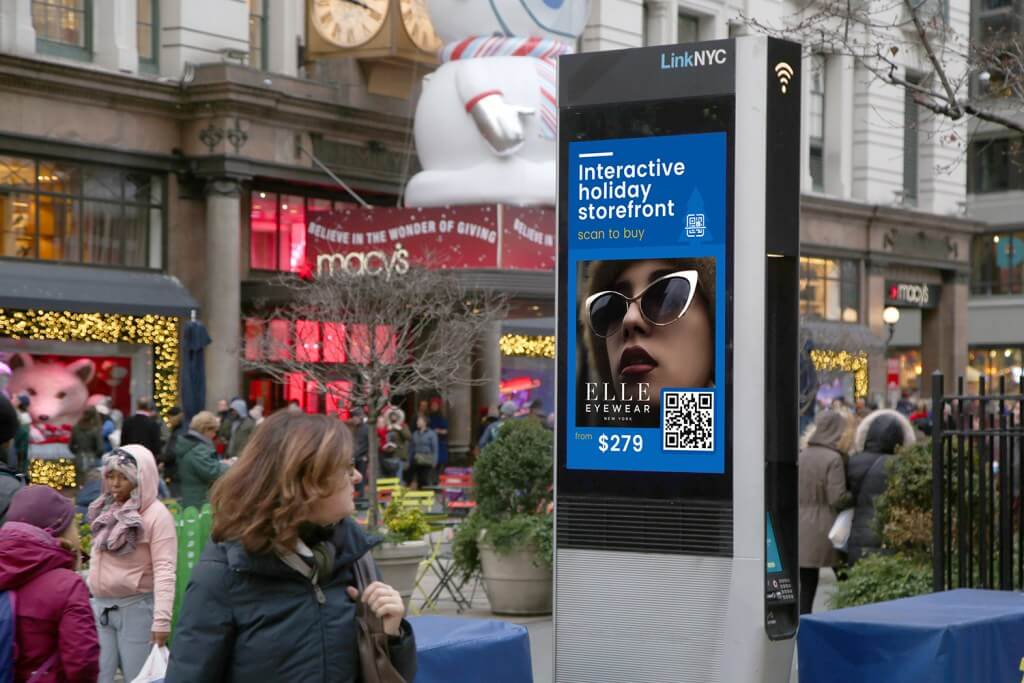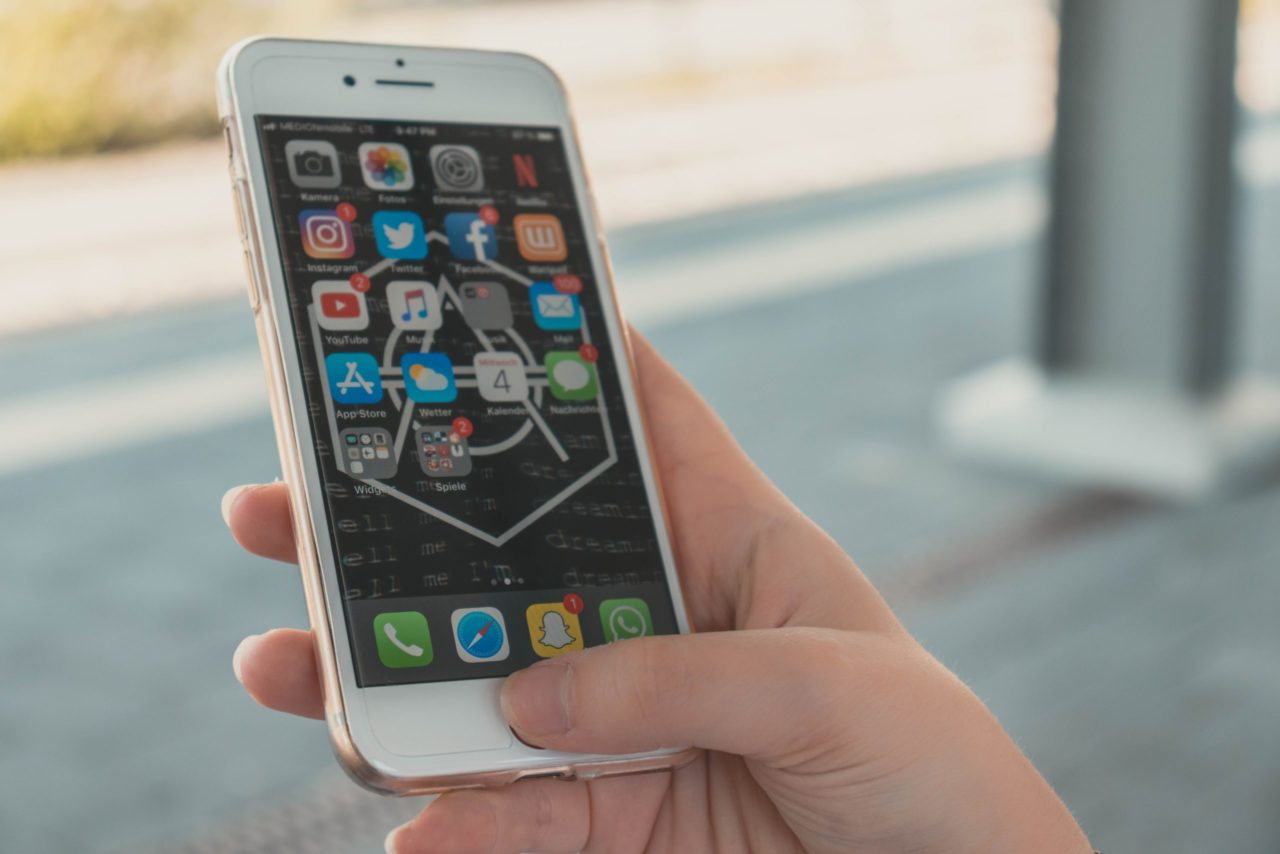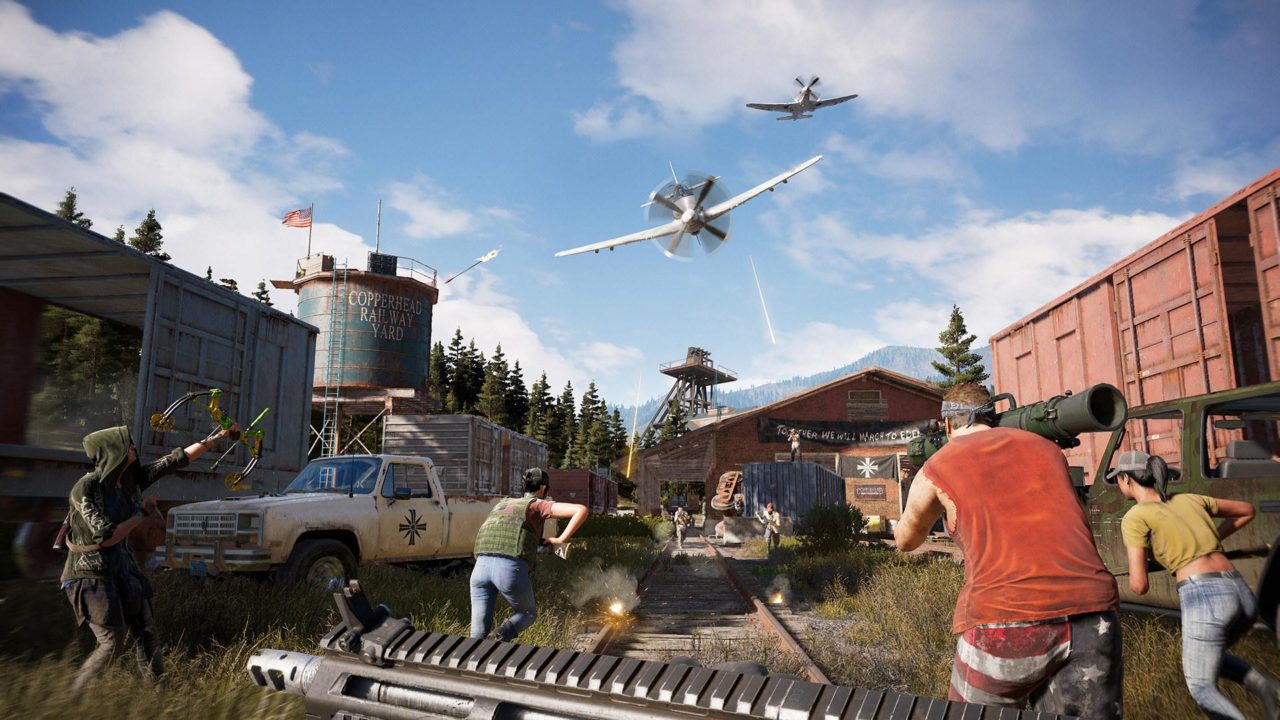The OOH industry is projected to grow in 2022 as consumers become more optimistic and spending begins to pick up. According to the latest insights report from the OAAA and Harris Poll Consumer Insights and Intent for Early 2022, 47% of consumers in major cities are noticing OOH ads compared to pre-pandemic levels. The study found that 85% of viewers think OOH ads are useful, with a further 42% saying they pay the most attention to ads that feature promotions or special offers.
As OOH comes back, there are some changes in trends that are occurring throughout the industry. QR codes are making a comeback thanks to their touch-free technology and ability to provide brands with measurable consumer data. In fact, one study found that the number of QR code coupons that will be redeemed by a mobile device in 2022 is expected to reach 5.3 billion – more than triple the 1.3 billion redemptions reported in 2017. With today’s consumers more accustomed to scanning QR codes than ever before, brands are increasingly including them in their campaigns to provide personalized offerings like product information, promotions, and coupons.
With Campsite’s recent partnership with ACTV8me, brands and advertisers can create interactive experiences through the use of dynamic QR codes incorporated into creatives. The partnership enables brands to increase engagement while adding a layer of attribution measurement that helps evaluate OOH ad performance with real-time consumer data.
Collect valuable insights while creating a one-to-one customer experience
By incorporating dynamic QR codes into any OOH creative, advertisers can create a direct-to-consumer experience through contextual offerings like coupons and promotions, adding a transactional layer to their campaigns. Consumers can access valuable information that enhances their brand experience by easily scanning and transacting through their mobile devices, helping drive converted sales that can be directly attributed to each campaign.
How it works
- Viewers scan a participating QR code via their mobile device’s camera.
- They are redirected to a microsite where they can immediately redeem offers or save them to mobile wallets like Apple Pay and Google Pay.
- Once saved, they are sent reminders and notifications when promotions are set to expire or when approaching an activated point of interest.
- Engagement data is collected, saved, and delivered to the advertiser.
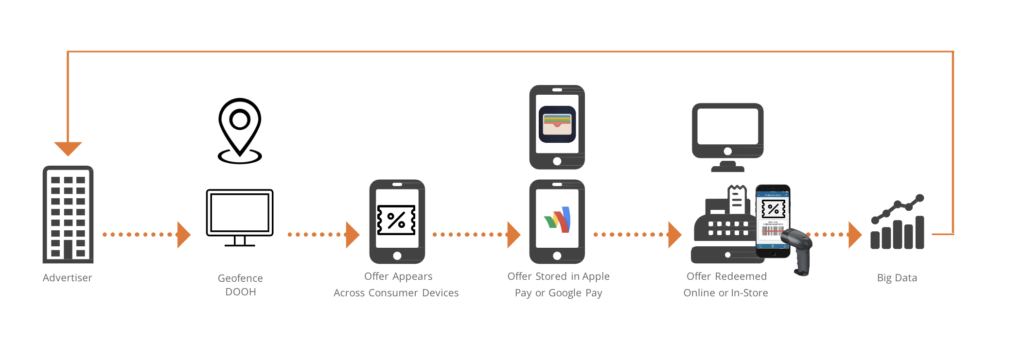
QR codes can be easily embedded into the campaign’s creatives. Once campaigns are live, advertisers can access real-time campaign performance data like total unique devices that have scanned codes, number of impressions, total number of QR code scans, and number of offers redeemed. Peak engagement times can also be tracked to give insight into when and how consumers are interacting with a brand.
Stay top-of-mind by continuously reconnecting with consumers
Incorporating QR codes into OOH campaigns has many benefits for both consumers and advertisers. For brands and agencies, different messaging can be displayed based on factors like time of day or a viewer’s location. This helps to extend the brand’s reach and marketing efforts to new locations, like retail environments, which can help drive sales and foot traffic. When a consumer enters an activated area, they can automatically be prompted with specific notifications and messaging, helping advertisers create an ongoing personalized experience.
Advertisers can also track every interaction and collect data in real-time to create targeted and contextual messaging. Enabling push notifications that deliver additional offers based on the campaign puts the brand in a top-of-mind position for the consumer. QR code-based offers can also help increase digital ad effectiveness by driving brand awareness and interaction without overexposing the consumer to ads. Campaigns can be optimized by A/B testing different offers and messaging in real-time, helping to close the sales loop and prove media marketing attribution.
Increase customer engagement across an entire campaign
The CPG and Retail industries are already familiar with the use of QR codes, though they’re way more prominent today than they were in the past. Many of the world’s biggest brands and retailers incorporate QR codes into their OOH campaigns to connect with consumers while helping drive impressions.
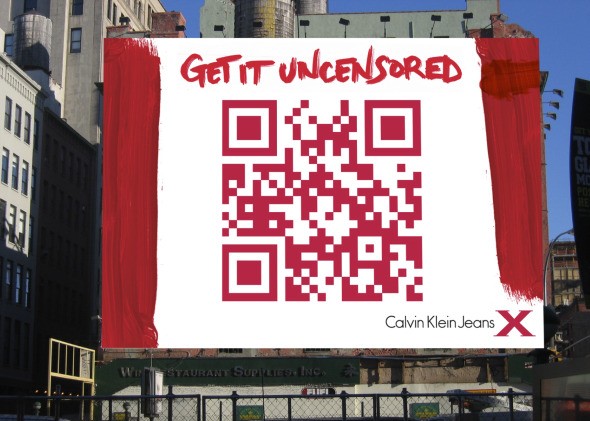
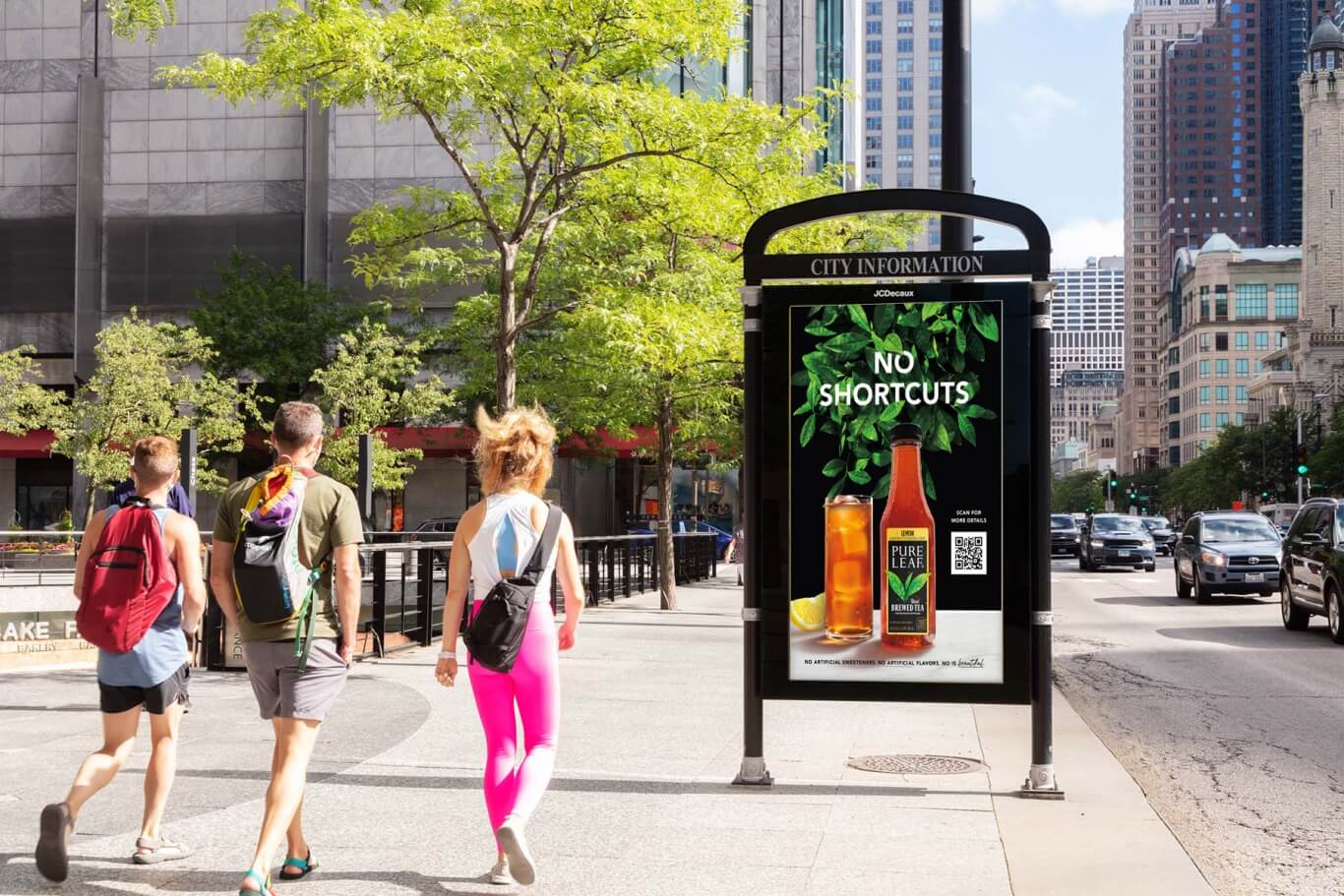
Let’s take a look at an example of an alcohol brand that launched a QR code activation campaign to promote its proprietary wine. The campaign ran across 12,000 screens in the US in 1600 building lobbies and elevators for a 2 month period, resulting in over 16 million impressions per month. When scanned, the brand’s QR offer displayed various bottles and wine packs in different sizes and prices ranges. Measurable data collected from this campaign showed a 10% week-to-week increase in customer engagement throughout the duration of the campaign.
Changing an ad’s call-to-action to a QR code can also help increase engagement, even if there is no promotion attached to the campaign. A cinema media company recently conducted a test with a popular movie release to measure the engagement of a QR code versus a vanity URL or text-to-screen CTA. They placed a dynamic QR code on-screen and invited viewers to scan it to unlock a short clip with additional content. The QR code was found to pull 6x more engagement than a vanity URL and 3x more than text-to-screen. For a moviegoer, scanning a QR code is easier and faster as most people have their cell phones with them during previews. For brands and advertisers, simply changing an OOH ad’s CTA from a URL or a 1-800 number can help yield big results in terms of engagement while also allowing them to reach larger and wider audiences.
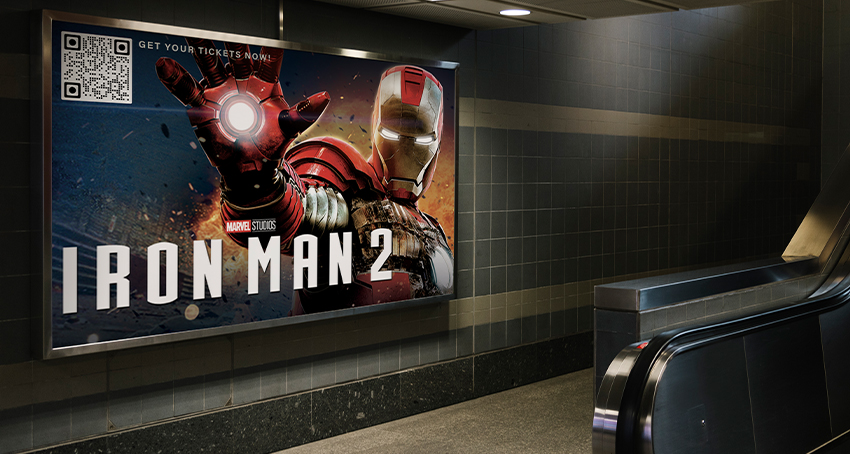
QR codes pull 6x more engagement than a vanity URL and 3x more than text-to-screen.
Making the comparison between different types of CTAs is critical for marketers and advertisers in evaluating the success of a campaign when it comes to measuring engagement levels. While QR codes can help drive sales or foot traffic, it can be difficult to attribute them to total consumer spend as it ultimately comes down to how good the offer is. If the goal is to drive engagement or create a unique brand experience, QR codes are a great option to turn any campaign into an interactive one.
